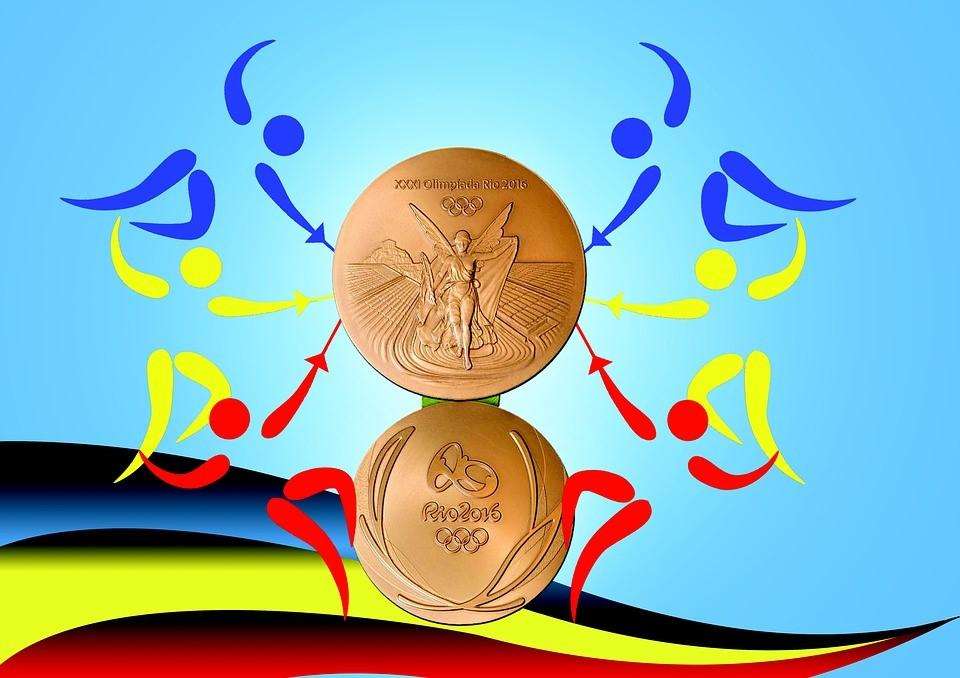History of Olympic gold medals and their monetary value


With the 2016 Rio Olympics concluded recently, images of teary-eyed, overjoyed winners posing for the shutterbugs, kissing, flaunting or biting their gold medals are still fresh in public memory. And it is that time again when everyone is wondering about the historical significance and monetary value of that coveted gold medal.
Figuratively speaking, a medal’s worth can vary as per perspective. For a winner, it may be the most precious possession, while someone trying to put a price tag on it may assess its worth on basis of its scrap value and for a person interested in history, the value of the medal may be directly linked to its historic significance and lineage.
Let’s take a trip down the pages of history to revisit the history of Olympic golds and try to evaluate their monetary value.
How the Tradition of Olympic Medals Took Form?
The first Olympics took place way back in 776 BCE. However, the idea of awarding medals to the winners hadn’t yet arrived then. Back in the day, winners were honored with wreaths made out of olive leaves. This practice continued until the Olympic Games were abolished altogether around 400 CE, purportedly by Roman emperor Theodosius I.
The games were revived centuries later with the first edition of the modern Olympics taking place in 1896. The practice of awarding winners with medals started with the modern Olympic Games, however, its roots can be traced back to Greek mythology.
All the three metals used in Olympic medals have played a significant role in the Ages of Man, on which the entire Greek mythology is based. The Golden Age refers to a time when men co-existed with the gods and lived in peace.
Then came the Silver Age where youth is believed to have lasted 100 years. It was also an age marked by human weakness and impiety. The Bronze Age, thereafter, is characterized by an era of violence, bloodshed and war. In his popular didactic poem, Hesiod talks about five ages in all, which also include the Heroic Age – the era of Trojan War – and Iron Age – the modern times.
There were no gold medals at the 1896 Olympics held in Athens. Winners were given silver medals, accompanied by olive branches, where was the runners-up received bronze medals. At the second edition of modern Olympics held in Paris in 1900, winners were given precious paintings and art works instead of medals. Winning athletes were awarded gold, silver and bronze medals for the first time at the St Louis Olympics. The tradition of awarding medals made of solid gold was short lived and ended after the Stockholm Olympics of 1912. This was done primarily for the economics of it all. Had the practice continued, every gold medal would have cost the International Olympics Committee a whopping $20,000, as per the present metal prices in the global markets.
How Much Is It Worth
When it comes to the value of Olympic gold medals, a lot rides on perception. For instance, there is a world of difference between how the organization giving out the medals and the person receiving it values them. How much would a medal fetch in an auction, how much is a collector willing to pay for them are some other parameter for assessing its monetary value.
However, the simplest and the most tangible way of ascertaining its monetary value would be to evaluate the worth of the metal if melted down. Since the 1968 Olympics at Mexico, the average dimensions of the medals are thickness of 6.5 millimeters, diameter of 65.8 millimeters, and weight 176.5 grams. At 375-400 grams, the weight of medals given away at the London Olympics was the highest since then.
The gold medals awarded to Olympics champions today consist only about 6 grams of gold, while the rest is sterling silver. Sterling means a mix of 92.5 per cent silver and 7.5 per cent copper.
With this composition, the value of an average Olympic gold medal is $366. At the current market prices of the metals, the London medals are worth $501. Given the high metal prices in 2012, the medals were worth $777 when they were given away.
How the Collectors Value Them?
Hundreds of medals are given away at every Olympic event, both Summer and Winter. It is not uncommon for athletes who have a slim chance of gaining financial stability through their sport alone to auction these off.
Such auctions take place every now and then. The value of medals sold off at such auctions swings is a wide range. Medals of lesser known athletes and from less popular sporting events fetch anywhere around $10,000. However, rare medals such as those won by sporting icons or ones with a vintage appeal can fetch exorbitant sums of money. A gold medal from Chamonix Olympics of 1924 was sold for a whopping $47,746, while another one from Melbourne Olympics 1956 went for $10,114.
Given the glory attached to an Olympic gold medal, there is no telling what its real worth could be for an athlete winning it, both monetarily and symbolically.
.jpg)
